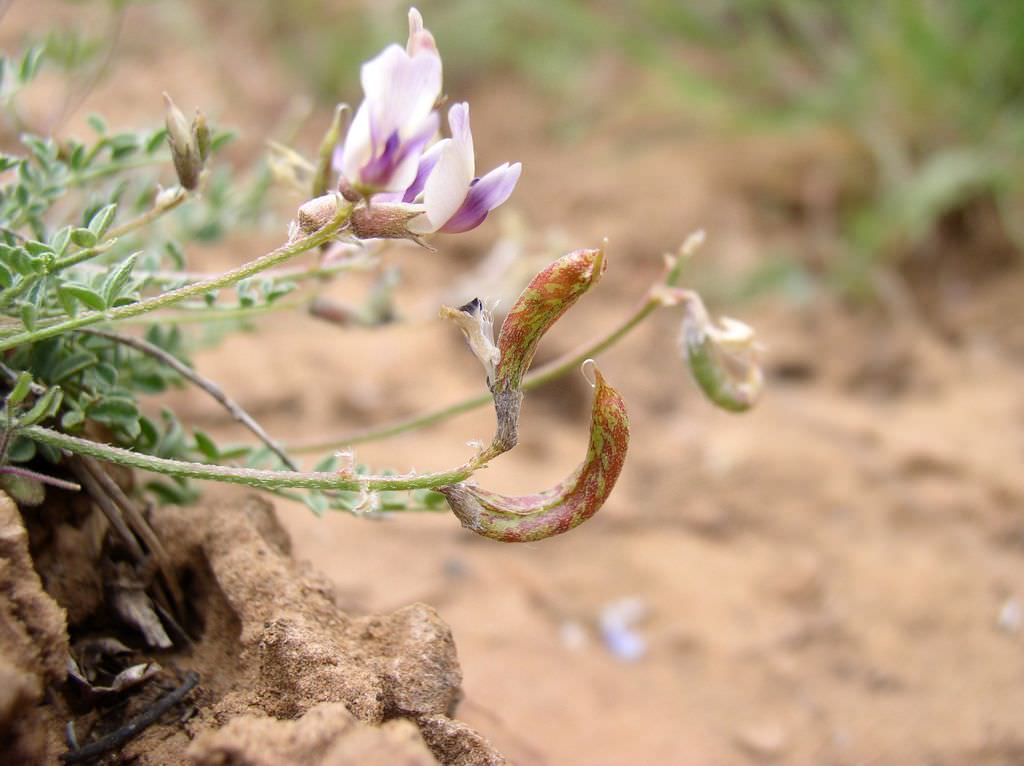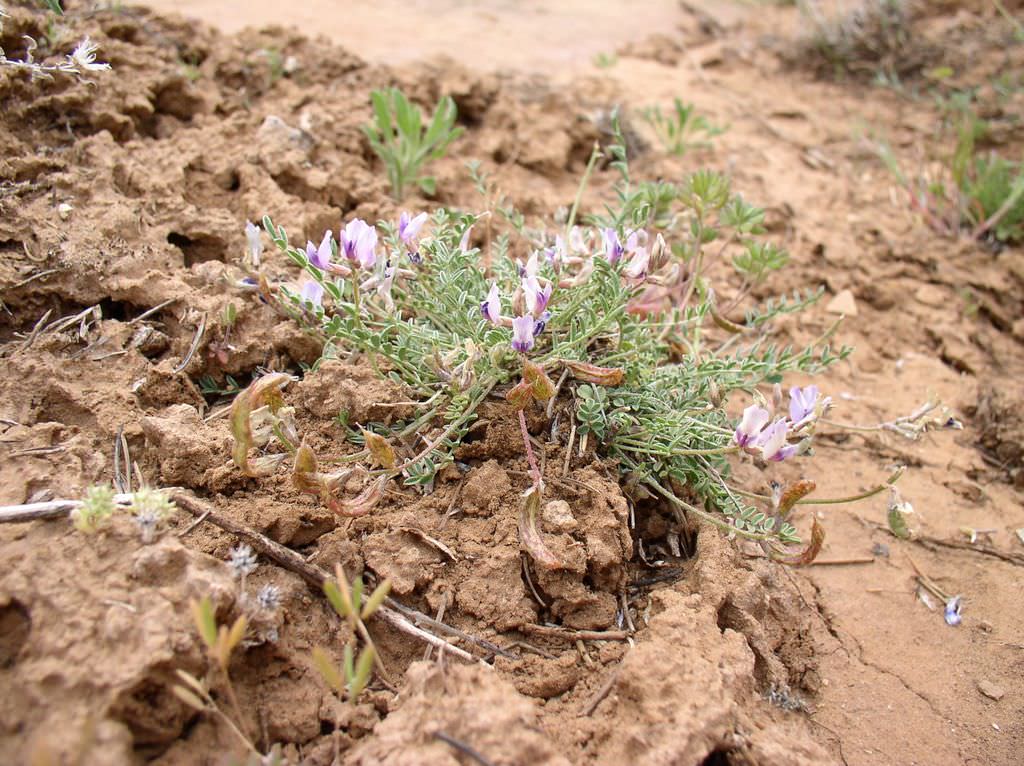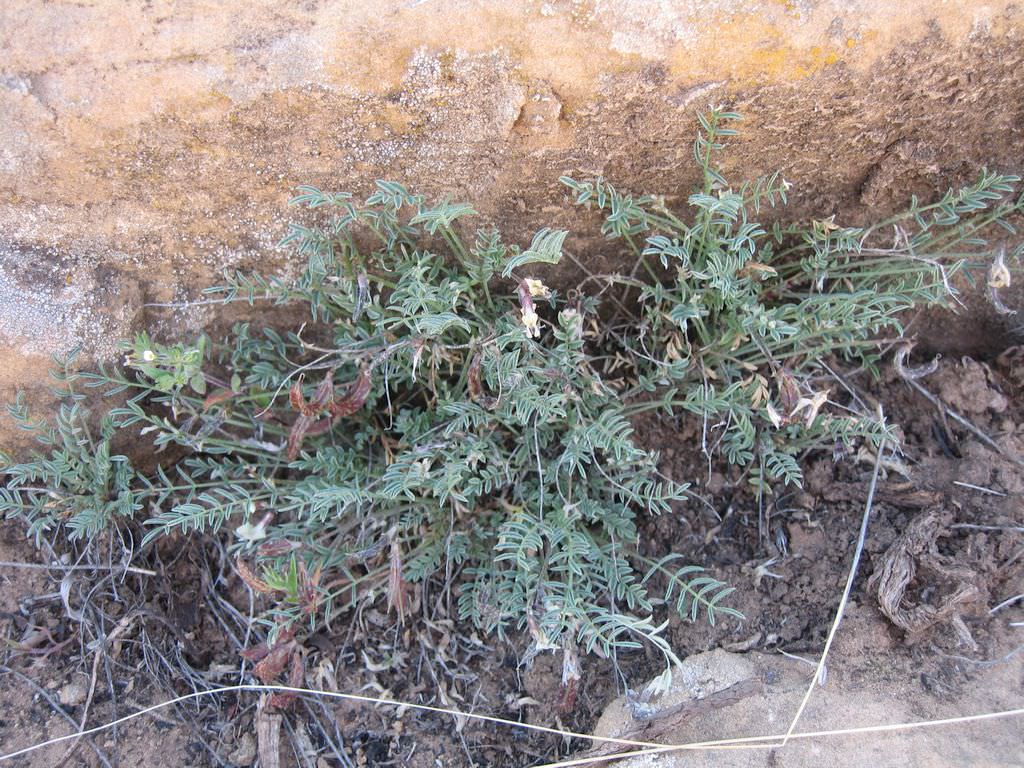Scientific Name : Astragalus deterior
Author : (Barneby) Barneby![]() NatureServe Explorer
NatureServe Explorer
Common Name : Cliff Palace Milkvetch
![]() Current Research Activities
Current Research Activities
![]() 1997 profile
1997 profile
Click link below for details.
Taxonomy
Fabaceae (pea family)
Ranks and Status
State Rank : S2
State Rank Reason : Astragalus deterior is endemic to Montezuma County, Colorado, USA, where it has been documented in 10 occurrences. It is considered to be vulnerable to the effects of climate change, particularly long-term drought. Non-motorized recreation and competition with the invasive species Bromus tectorum also pose threats to this species.
U.S. Endangered Species Act : none
Colorado Threatened and Endangered List : none
Other Statuses : SWAP Tier 1
Description and Phenology
General Description:
A low-growing perennial herb, usually 0.5-3 cm tall, similar in appearance to A. naturitensis; distinguished from that species by its smaller cream-colored flowers with purple markings and papery, rather than leathery, pods.
Look Alikes:
A. monumentalis var. cottamii has narrower pod septa and pink-purple flowers. A. humillimus has a distinctive spine-tipped rachis which remains part of the plant after the leaves are shed (Spackman et al. 1997).
Phenology:
Flowers from early through mid-May and fruting in late May through early to mid-June.
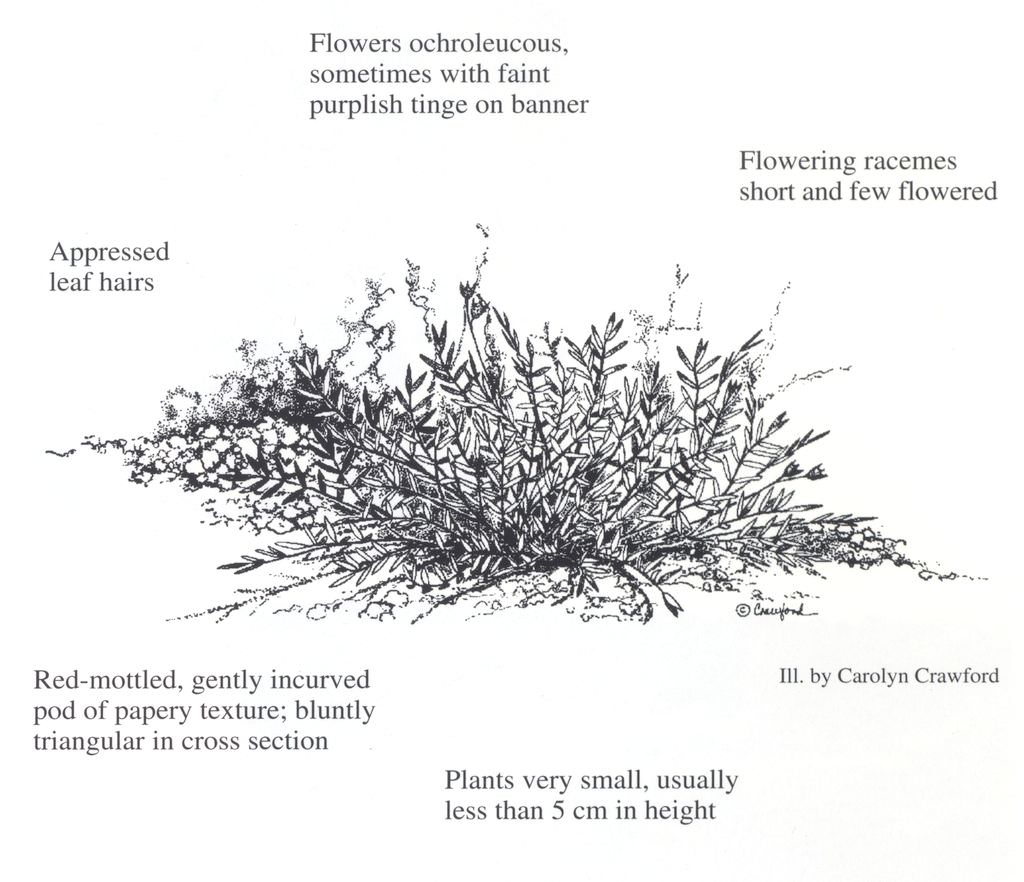 |
Habitat
In sand-filled depressions of flat rimrocks, on cliffs, and on adjacent sandy talus. Always associated with the white zone of the Upper Cliff House Sandstone (Floyd and Colyer 2003). Populations occur where this zone is cut by small streams and where the soils below are white zone-derived. Also found on edges of mesas and in cracks and depressions in shallow soil in the pinyon-juniper zone. Associated species include: Pinus edulis, Juniperus osteosperma, Quercus gambelii, Bouteloua gracilis, Heterotheca villosa, Poa fendleriana, Erigonium jamesii, Gilia sinuata, Purshia tridentata, Echinocereus triglochidiatus, Opuntia polyacantha, Cercocarpus montanus, Phlox hookii, Achnatherum hymenoides, Elymus elymoides, Hilaria jamesii, Fendlera falcata, Yucca baccata, Amelanchier utahensis, Delphinium nelsonii, and Lesquerella rectipes. Canopy is open, many are in the shade of pinyons.
click on image to enlarge
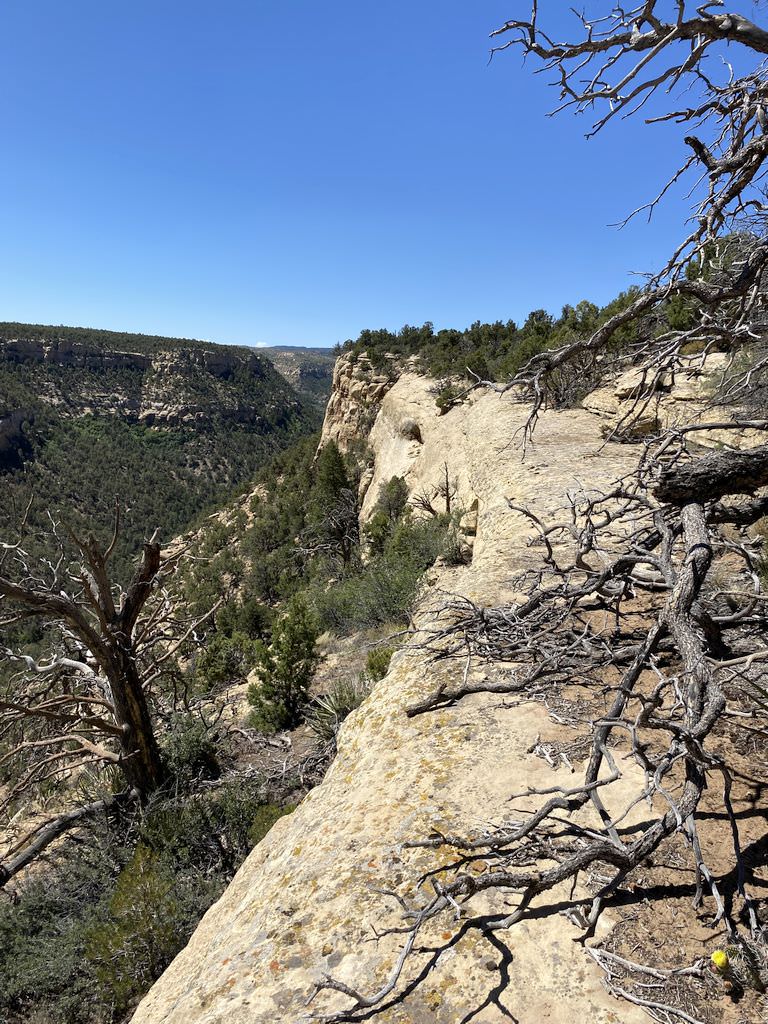 |
Elevation Range:
6,326 - 8,136 feet (1,928 - 2,480 meters)
Distribution
Colorado Endemic:
Yes
Range:
Astragalus deterior is endemic to Montezuma County, Colorado, USA. It is found on the edges of mesas above the Mancos River and possibly on the Ute Mountain Indian Reservation (Peterson 1981). The estimated range extent in Colorado of 72 square kilometers was calculated in GeoCAT using occurrence data provided by the Colorado Natural Heritage Program (2023).
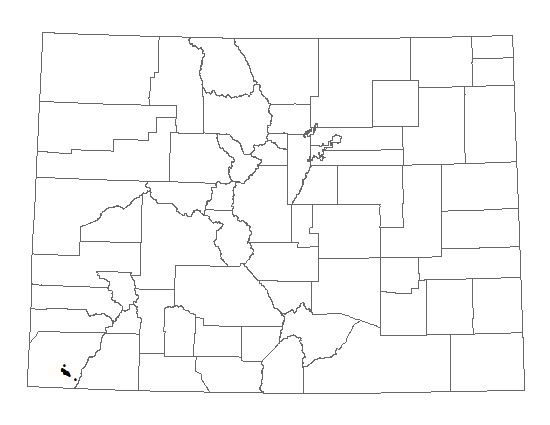 Click on map to enlarge |
Threats and Management Issues
Due to the nature of its habitat in sand-filled depressions of flat rimrock just above canyon cliffs, the main threat to Astragalus deterior arises from increased temperatures and prolonged drought associated with climate change (Handwerk et al. 2015). Non-motorized recreation (foot traffic from park visitors) may have deleterious effects in a few occurrences where trails coincide with the species habitat and trampling has been observed (CNHP 2023). Half of the occurrences have documented Broums tectorum within or near Astragalus deterior habitat where it competes for scarce resources (CNHP 2023).
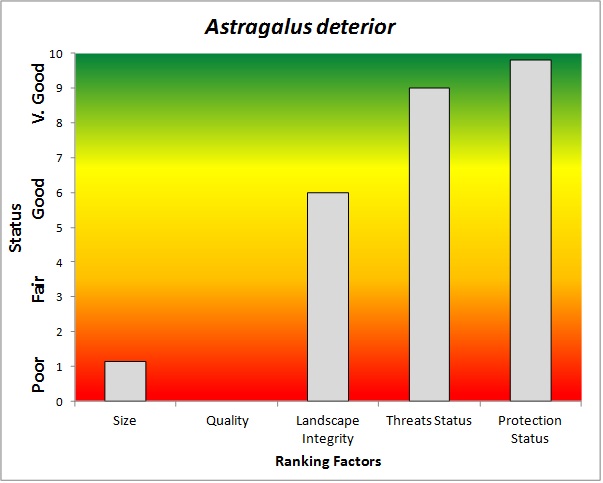 Summary results of an analysis of the status of Astragalus deterior based on several ranking factors. This species was concluded to be Moderately Conserved. From Rondeau et al. 2011. |
References
- Ackerfield, J. 2015. Flora of Colorado. BRIT Press, Botanical Research Institute of Texas, Fort Worth, TX. 818 pp.
- Barneby, R.C. 1964. Atlas of North American Astragalus. 2 Vols. New York Botanical Garden, Bronx, New York. 1188 pp.
- Colorado Native Plant Society. 1989. Rare plants of Colorado. Rocky Mountain Nature Association, Colorado Native Plant Society, Estes Park, Colorado. 73 pp.
- Colorado Natural Heritage Program (CNHP). 2023. Biodiversity Tracking and Conservation System (Biotics 5). Colorado Natural Heritage Program, Colorado State University, Fort Collins.
- Floyd, M. L., and M. Colyer. 2003. Beneath the Trees: Shrub, Herbs and Some Surprising Rarities. Pages 31-60 in: L. M. Floyd, ed. Ancient Pinyon-Juniper Woodlands. University Press of Colorado, Boulder, CO.
- Handwerk, J., L. Grunau, and S. Panjabi. 2015. Colorado Wildlife Action Plan: 2015 Rare Plant Addendum. Colorado Natural Heritage Program, Colorado State University, Fort Collins, Colorado, USA.
- Neely, B., S. Panjabi, E. Lane, P. Lewis, C. Dawson, A. Kratz, B. Kurzel, T. Hogan, J. Handwerk, S. Krishnan, J. Neale, and N. Ripley. 2009. Colorado Rare Plant Conservation Strategy, Developed by the Colorado Rare Plant conservation Initiative. The Nature Conservancy, Boulder, Colorado, 117 pp.
- O'Kane, S. L. 1988. Colorado's Rare Flora. Great Basin Naturalist. 48(4):434-484.
- Peterson, J.S. 1981. Status report on Astragalus deterior. Unpublished report prepared for the Colorado Natural Areas Program, Denver, CO.
- Rondeau, R., K. Decker, J. Handwerk, J. Siemers, L. Grunau, and C. Pague. 2011. The state of Colorado's biodiversity 2011. Prepared for The Nature Conservancy. Colorado Natural Heritage Program, Colorado State University, Fort Collins, Colorado.
- Spackman, S., B. Jennings, J. Coles, C. Dawson, M. Minton, A. Kratz, and C. Spurrier. 1997. Colorado rare plant field guide. Prepared for Bureau of Land Management, U.S. Forest Service and U.S. Fish and Wildlife Service by Colorado Natural Heritage Program.
- USDA, NRCS. 2013. The PLANTS Database. National Plant Data Team, Greensboro, NC 27401-4901 USA.
- USDA, NRCS. 2022. The PLANTS Database. National Plant Data Team, Greensboro, NC 27401-4901 USA.
- Weber, W. A. and R. C. Wittmann. 2012. Colorado Flora, Western Slope, A Field Guide to the Vascular Plants, Fourth Edition. Boulder, Colorado. 532 pp.


